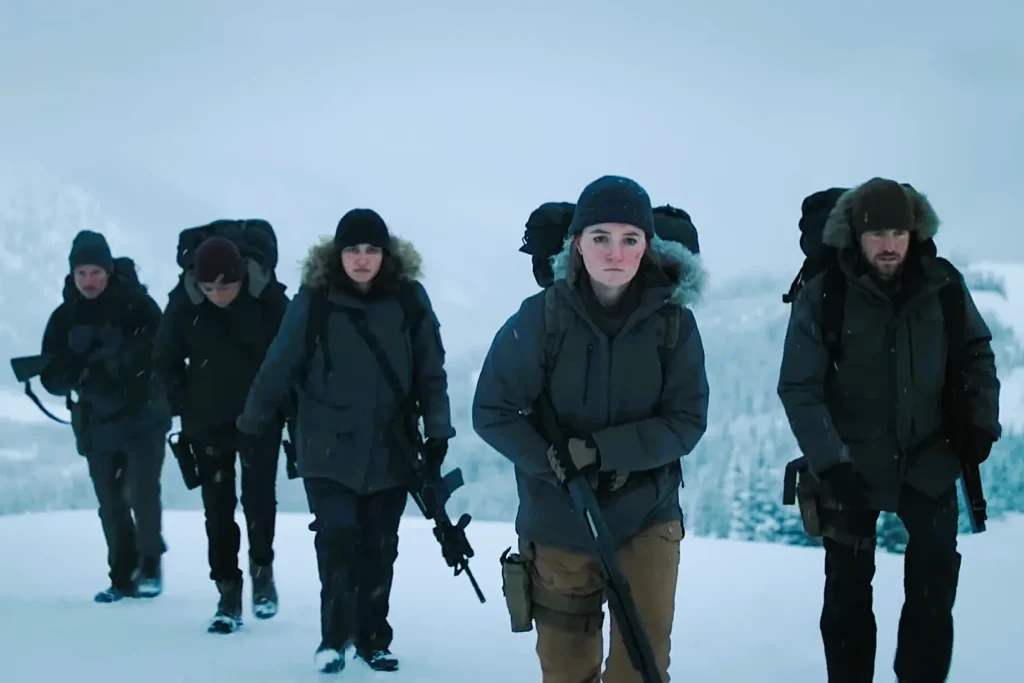Key Points:
- Ryan Coogler’s Sinners is a hybrid of Southern Gothic, horror, Western, and thriller genres
- The film uses vampire mythology to explore racial trauma, capitalism, and ancestral grief
- Set in 1932 Mississippi, the story follows two brothers building a juke joint while confronting a supernatural evil rooted in racism
What Is Sinners About?

Ryan Coogler’s Sinners (2025) is a genre-fluid psychological thriller grounded in horror and steeped in Southern Gothic tradition. Set in 1932 Mississippi Delta, it follows twin brothers Smoke and Stack (played by Michael B. Jordan) as they return home to open a juke joint. What begins as a vision of Black prosperity quickly descends into horror when they face off against a vampiric entity tied to ancestral trauma and systemic oppression.
The film premiered in April 2025, with theatrical release plans leading to expected streaming availability in late summer 2025, though no official platform has been confirmed.
READ MORE: Where do you know Your Friends and Neighbors actress Isabel Gravitt From?
How Does Sinners Use Southern Gothic to Explore Racial Trauma?

Sinners is firmly rooted in Southern Gothic, using its Mississippi Delta setting to amplify themes of decay, moral ambiguity, and buried histories. The Deep South, marked by Jim Crow laws, economic desolation, and cultural resistance, becomes a living character in the film. The brothers’ attempt to build a safe space for Black joy within this oppressive landscape mirrors the Southern Gothic tradition’s focus on psychological unease and societal breakdown.
Coogler builds this atmosphere with visual motifs: rotting plantation homes, Spanish moss, and dimly lit interiors emphasize spiritual and physical deterioration. Delroy Lindo’s character, Delta Slim, a haunted bluesman, embodies the wounded storyteller archetype, channeling both personal loss and collective grief through his music.
Incorporating Hoodoo rituals through Wunmi Mosaku’s character Annie, Coogler ties spiritual survival to cultural heritage. The blend of supernatural folklore and historical memory highlights how the trauma of slavery and segregation lingers as both ghost and curse.
READ MORE: How to Watch Captain America Brave New World Online Now
What Horror and Monster Elements Define Sinners?

While vampires are central to the film’s horror structure, Sinners redefines the monster movie through an Afrocentric lens. These vampires are not glamorous European figures but spectral metaphors for racism, exploitation, and generational pain. Their ghastly appearance echoes the imagery of lynching victims and forgotten sharecroppers, transforming horror into historical allegory.
The vampires’ aversion to sunlight becomes symbolic: just as Black Americans are alternately rendered hypervisible and invisible by society, these monsters dwell in hidden corners, feeding on those deemed expendable.
Coogler’s horror scenes combine body horror and psychological suspense. A standout moment features a vampiric attack mid-blues performance, with the creature’s movements syncing to Delta Slim’s guitar riff—turning art into a site of seduction and destruction. Rather than a traditional “final girl,” Coogler centers Black male vulnerability, as Smoke and Stack’s military background is powerless against an enemy that manipulates their memory, legacy, and brotherhood.
READ MORE: Who Is Eugene in The Last of Us Season 2
In What Ways Does Sinners Channel and Subvert the Western Genre?

Sinners borrows from Western iconography to critique myths of American exceptionalism and frontier justice. The brothers’ journey mirrors the returning veteran archetype, yet they are not conquering new land but reclaiming a forgotten home—one that views their ambition with hostility.
Their project—transforming a former sawmill into a juke joint—reflects the Western homesteading narrative, but instead of outlaws or rival settlers, their antagonists are racism, economic sabotage, and supernatural terror. A tense verbal showdown between Stack and a racist sheriff reflects the Western duel, but with legal ownership and systemic hatred replacing bullets.
Rather than celebrating lone heroism, Coogler emphasizes communal survival. Hailee Steinfeld’s Mary and Jayme Lawson’s Pearline play pivotal roles, wielding Hoodoo protections and strategic foresight, flipping traditional Western gender roles and reinforcing collective resistance over individual dominance.
READ MORE: Minecraft Movie: How the Nether Compares to the Game
How Does the Thriller Structure Drive the Narrative in Sinners?

As a thriller, Sinners employs nonlinear storytelling, fragmented timelines, and high-stakes suspense. The film opens and closes with Miles Canton’s Sammie, a traumatized survivor, whose narration frames the story as an inevitable tragedy, enhancing the thriller’s underlying dread.
The building of the juke joint becomes a countdown device, heightening anticipation as vampires close in. Every supply delivery and artist booking escalates the sense of a coming siege. Jack O’Connell’s villain—a businessman cloaked in respectability—brings a cold, corporate menace, representing systemic horror rather than overt violence, and contrasting with the physical brutality of the Klan members.
The film’s pacing, which shifts from measured world-building to frenzied horror, mirrors the structure of Delta blues music—repetitive, cyclical, and emotionally resonant. While this rhythm may challenge viewers expecting conventional thrills, it complements the film’s meditative tone on history and trauma.
Source: Rolling Stone
Stay updated with the Latest News and Stories, follow us on our social media platforms.
You can follow us on:
Stay Connected!! Join our Whatsapp Channel
















